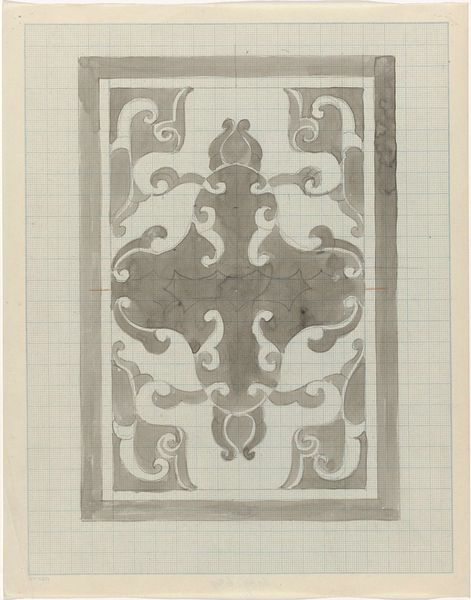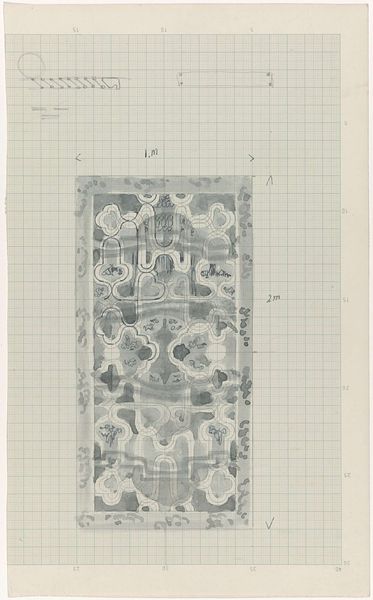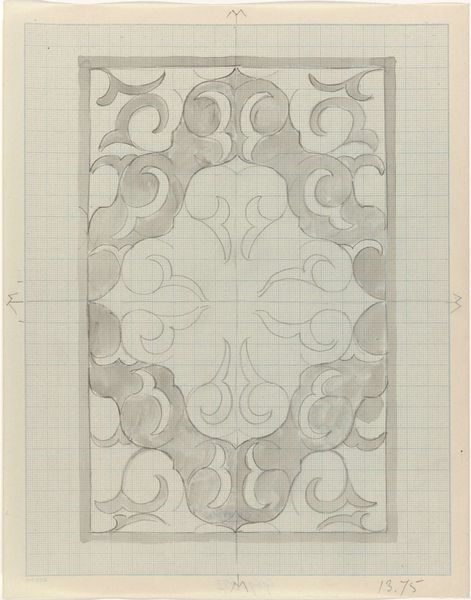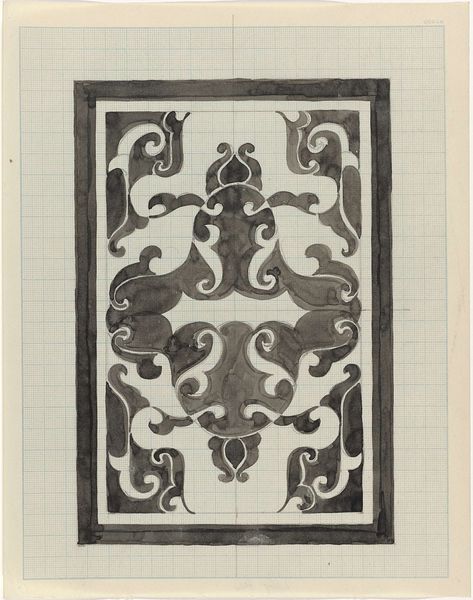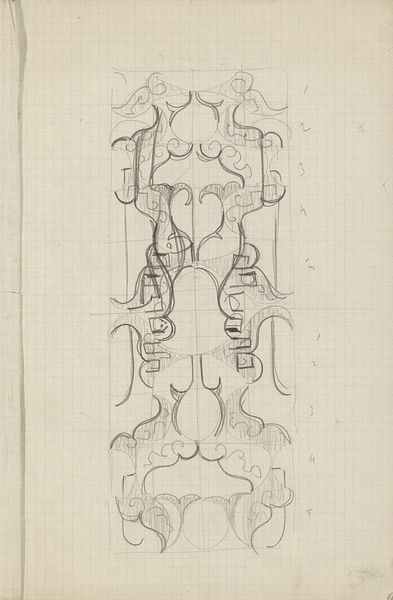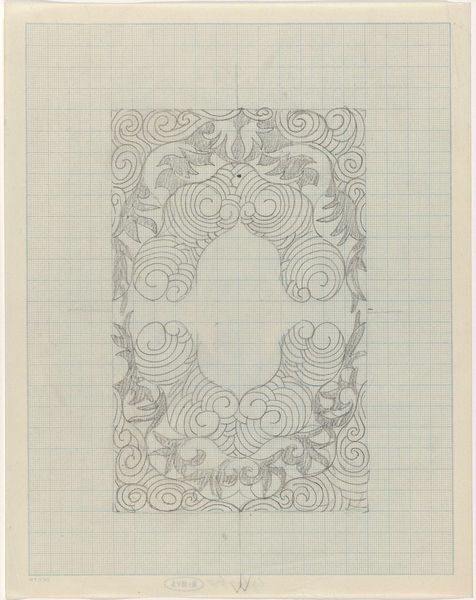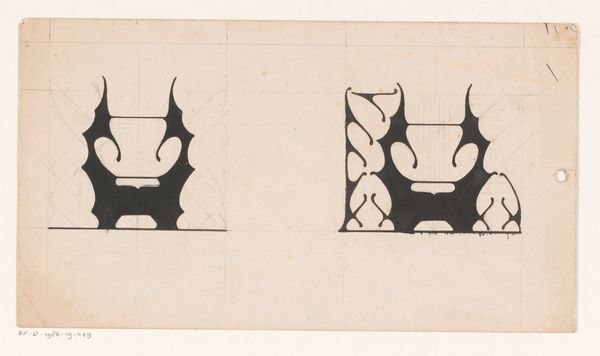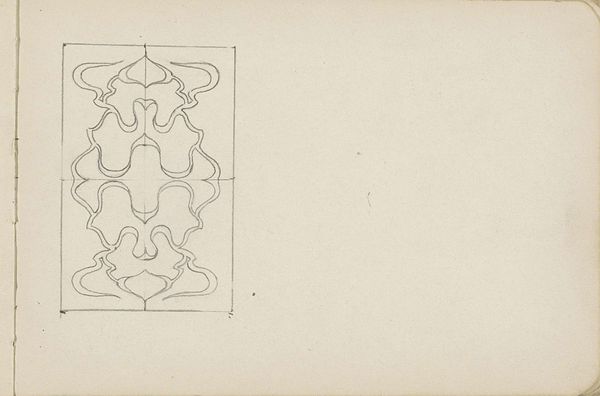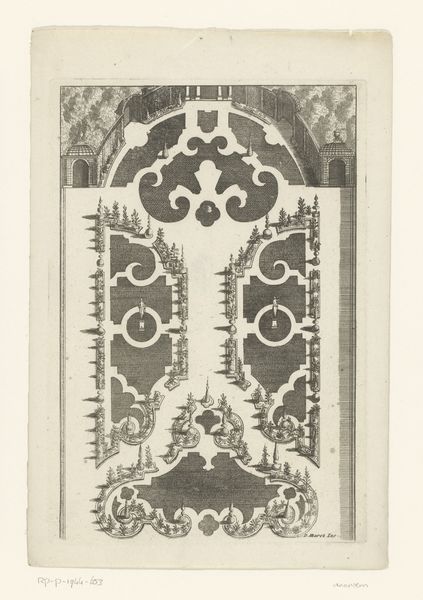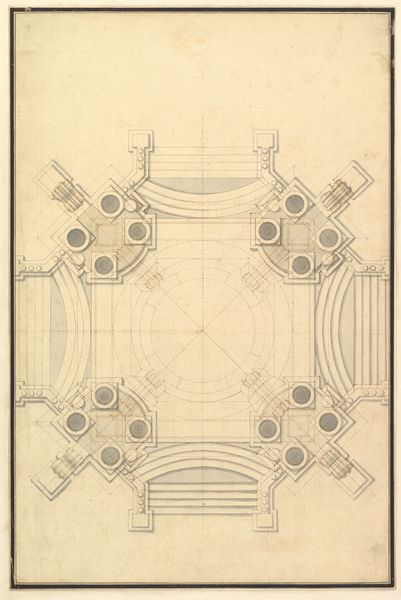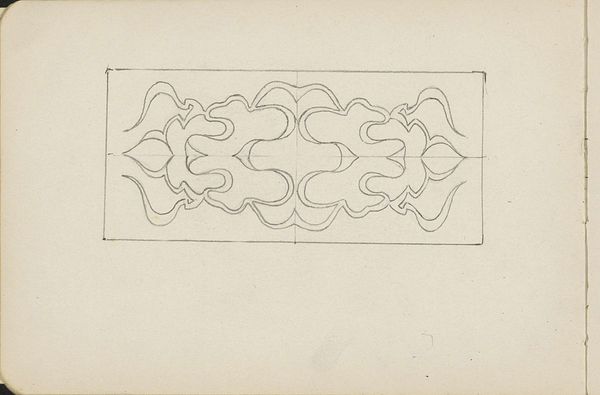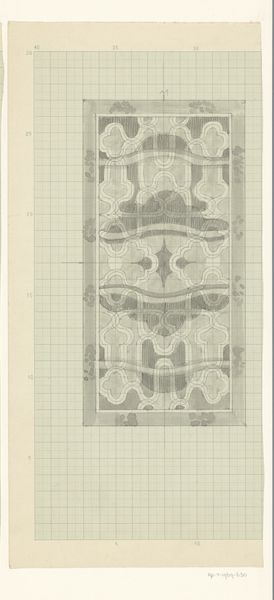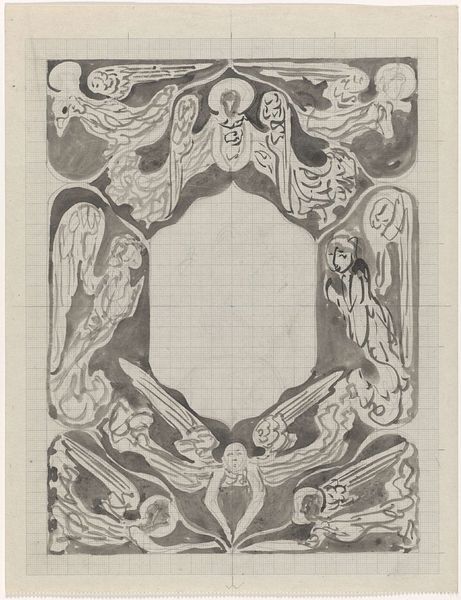
#
photo of handprinted image
#
type repetition
#
rippled sketch texture
#
aged paper
#
toned paper
#
retro 'vintage design
#
embossed
#
tonal art
#
repetition of white colour
#
green and neutral
Dimensions: height 217 mm, width 165 mm
Copyright: Rijks Museum: Open Domain
Curator: Here we have "Ontwerp voor kleed met abstract patroon," or "Design for a carpet with abstract pattern," by Carel Adolph Lion Cachet, likely created sometime between 1874 and 1945. It’s currently part of the Rijksmuseum's collection. Editor: It’s quite intriguing. It gives the impression of controlled chaos, a series of layered shapes and lines almost fighting for space. The graph paper backdrop adds to the tension, suggesting precision trying to contain something more organic. Curator: That contrast is crucial. Cachet, heavily involved in the Arts and Crafts movement, understood the potential of pattern. The design isn't just decorative; it engages with dialogues about domesticity, gender roles, and even coloniality, given the global exchange of textile designs during that era. Consider how repeated patterns historically reflected hierarchies, or subverted them! Editor: Absolutely, there's an inherent socio-political element here. This design might look purely aesthetic, but we can read into the symbolism within its imagery. I am fascinated by how patterns are utilized to dictate belonging. Are these organic forms inviting? Or perhaps reflecting the rigidity of social order through imposed visual language? How might the carpets for which this was sketched have served as silent status signifiers within a household? Curator: Exactly! And beyond those grander historical narratives, the artwork engages questions about authorship and process. The visible underdrawing offers glimpses of artistic thought, the hesitations and refinements crucial to its making. What do those slight imperfections or apparent mistakes tell us? Editor: Those layers almost function like the palimpsests of lived experience; as the original foundations or intended image fade away and let the visual present—or, if you will, our current culture context and its concerns, take over. These kinds of artworks become especially charged spaces for questioning historical artistic narratives, for considering power imbalances, and imagining alternatives that challenge, correct, and invite. Curator: It becomes a microcosm, where artistic intentions mingle with wider cultural forces. We begin to really comprehend a past aesthetic movement when its material culture sparks so much reflection about contemporary struggles. Editor: A carpet design holding that kind of power. I love the potential and possibility of engaging with works such as this one!
Comments
No comments
Be the first to comment and join the conversation on the ultimate creative platform.
